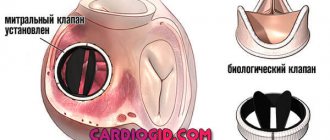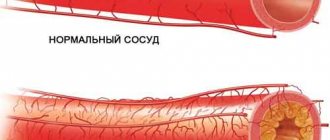The term “failure” in medicine refers to conditions when an organ does not perform the functions assigned to it. It can be acute when, in a short period of time, a large number of structural units (not cells, but their communities that together perform a certain job) stop working at once. It can be chronic, when either the number of structural and functional units or their quality gradually decreases. Liver failure syndrome is a combination of symptoms associated with insufficient protein production, poor blood clotting, severe intoxication, resulting from impaired liver function.
Causes of liver failure
The main causes of acute liver failure:
- Taking and/or overdose of drugs with hepatotoxic properties;
- Acute hepatitis caused by hepatitis viruses A, B, C, D, E;
- Acute hepatitis caused by cytomegalovirus, herpes and Epstein-Barr viruses;
- State of shock;
- Poisoning by chemicals, poisonous plants and mushrooms;
- Thromboembolism of the hepatic arteries or veins;
- Pathological pregnancy (pre-eclampsia/eclampsia), provoking acute fatty liver degeneration.
The most common cause of acute liver failure in European countries is the prescription of paracetamol as an antipyretic and analgesic (about 40% of cases). In 12% of cases, the disease occurs due to idiosyncrasy when taking various medications. Other common causes of acute liver failure are viral hepatitis A, B, C, D and E (the risk of acute liver failure increases when infected during pregnancy). In 30% of cases, an idiopathic form of acute liver failure is diagnosed, which occurs when the liver is damaged by an unknown agent.
Clinical guidelines
It is difficult to recognize the developing symptoms of liver failure. It is necessary to undergo regular laboratory tests to detect PN in the early stages. Concomitant diseases should be promptly eliminated. You cannot treat yourself. Liver pathologies develop from an illiterate choice of medications.
Clinical recommendations are very simple. If you have any suspicions, then you need to go to the doctor. Prevention is required for healthy liver function. It is necessary to eat right, avoid drinking alcohol and drugs, and eliminate stress. This is only a small part of the measures, but they are enough for healthy liver function.
Mechanism of development of liver failure
Hepatocytes make up 85% of the total liver mass. Thousands of chemical reactions take place in them, allowing the organ to perform its function. With a decrease in the number of hepatocytes, a proportional decrease in the functional activity of the liver occurs.
The acute form of liver failure is accompanied by the immediate death of more than 80-90% of liver cells. In this case, there is a sharp decrease in the functional activity of the organ. The disease is accompanied by a violation of all types of metabolism, an increase in the concentration of toxins in the blood, a failure in the regulation of blood pressure, and blood clotting. The body goes into disarray, severe disturbances in the functioning of the central nervous system occur, including hepatic encephalopathy, hepatic coma and death.
Consequences and complications
Frequent complications in patients with acute renal failure and chronic renal failure are:
- Changes in the cardiovascular system: cardiac output and blood flow through the portal vein increase, portal hypertension develops, which is accompanied by dilation of the veins of the internal organs.
- Bleeding from the gastrointestinal tract.
- Hepatic encephalopathy . It complicates the course of acute necrotizing hepatitis and the terminal stage of all chronic liver diseases. Neuropsychiatric disorders in hepatic encephalopathy are reversible with proper and timely treatment.
- Development of coma in the absence of timely treatment of hepatic encephalopathy.
- Increased intracranial pressure.
- Cerebral edema is a severe complication of acute renal failure. It causes ischemic brain damage and long-lasting neurological deficits in surviving patients. In the worst cases, swelling causes brain herniation and death of the patient.
Classification of acute liver failure
Acute liver failure is classified into fulminant and subfulminant forms. Fulminant liver failure is accompanied by rapid development of symptoms of hepatic encephalopathy within 8 weeks from the onset of the disease. Subfulminant is a form of the disease in which the onset of encephalopathy is recorded between 8 and 26 weeks.
Another option for the classification of acute liver failure: the most acute form (symptoms occur within 7 days from the onset of the disease), acute (from 7 to 28 days), subacute (from 28 days to 24 weeks).
ICD-10 code: K72.0
Forecast
The prognosis for acute deficiency depends on timely diagnosis, identification of the damaging factor and early initiation of treatment. The survival of any patient depends on the ability of a given organ to regenerate, but it is impossible to predict. The outcome is unpredictable in each case.
The causes of death of patients are bleeding , cerebral edema , respiratory , renal and heart failure , as well as infectious complications, which are observed in 80% of patients. Patients are susceptible to bacterial and fungal infections. In 70–80% of patients with acute liver failure, autopsy reveals herniation of the brain.
Without liver transplantation, the mortality rate for fulminant liver failure is 70%. If the cause is hepatitis A and paracetamol , then the mortality rate is no more than 50%. The survival rate of patients in a coma and severe coagulation disorders without a liver transplant is no more than 10%.
The endogenous form of hepatic encephalopathy is characteristic of fulminant liver failure, has a very rapid course and a poor prognosis. The exogenous form of hepatic encephalopathy is characteristic of chronic diseases (for example, cirrhosis ), in which portocaval anastomoses , occurs chronically and the prognosis is better with relatively preserved function.
Liver failure in children
Liver failure in childhood has differences in the clinical picture of the disease. This is explained by the fact that in children it is more difficult to determine the initial signs of hepatic encephalopathy, especially at an early age. For this reason, the leading sign of liver dysfunction in children is considered to be a pronounced disorder of blood clotting or coagulopathy, regardless of the state of higher nervous activity or the presence of jaundice. Any child with symptoms should be evaluated for liver failure.
General information
The liver performs many functions in the body, being the “biochemical laboratory” of the body.
With various diseases of this organ or damage (poisons, toxins), liver failure develops. The term “liver failure” combines a complex of symptoms associated with various liver dysfunctions, as a result of which a discrepancy develops between the needs of the body and the functional capabilities of the liver. The main functions of the liver (detoxification, synthetic, regulation of metabolic processes) are impaired to varying degrees. If the protein-forming function of the liver is disrupted in isolation, this is hepatocellular failure syndrome . Hepatocellular failure is assessed by the level albumin . If one or more functions are impaired, functionality may be compensated or progress to the development of coma. In this regard, there is no uniform definition of “liver failure”. Some authors consider liver failure to be any violation of its function, while others believe that this term is valid only in the case of the development of hepatic encephalopathy - a complication of decompensated liver failure.
The cause of decompensation of functions is massive necrosis of hepatocytes due to toxic, viral or ischemic damage to an initially healthy liver, or exacerbation of chronic liver disease, when for some reason (bleeding, liver surgery for cirrhosis or tumor ) acute decompensation of a chronic disease develops. The development of liver failure indicates that more than 75-80% of liver cells have lost their function. The detoxification function of the organ is disrupted and a number of toxic substances (indole, ammonia, skatole, phenol, fatty acids) enter the systemic bloodstream, causing the development of encephalopathy and coma.
Liver failure most often develops against the background of acute and chronic viral hepatitis . In second place among the causes in men is alcoholic liver damage with the development of cirrhosis. Acute liver failure in women is mostly associated with viral hepatitis E , especially during pregnancy, increasing mortality to 25%. In this article we will look at the symptoms of this condition and the main directions for correcting it.
Symptoms of liver failure
The clinical picture of liver failure consists of a number of symptoms resulting from impaired liver function and accompanying pathological changes in the body.
Symptoms and signs of liver failure
- Spider veins on the body
- Enlarged mammary glands (including in men)
- Unpleasant odor when breathing
- Insomnia, memory impairment, irritability, decreased performance and other signs of hepatic encephalopathy
- Itchy skin, dark urine, jaundice, bitter taste in the mouth - cholestasis syndrome
- Increased duration of bleeding, tendency to bleed, high risk of gastrointestinal bleeding
- Hemorrhagic syndrome is caused by a disorder of protein metabolism
- Weakness, weight loss, nausea, loss of appetite, headaches, dizziness
- Bleeding from the veins of the esophagus/rectum
- Accumulation of free fluid (transudate) in the abdominal cavity (ascites)
- Pain, heaviness in the hypochondrium on the right and/or left
- Symptom “jellyfish head” - dilated saphenous veins on the anterior abdominal wall
About the liver
The liver is the heaviest organ that performs many functions. Yes, she:
- inspects almost all substances that enter the intestines or are absorbed into the circulatory system;
- synthesizes urea from toxic ammonia;
- neutralizes substances formed during its own metabolism. Thus, indirect bilirubin, formed from hemoglobin, is poison for the brain. The liver binds it with glucuronic acid, and it, becoming less toxic, should be excreted in the bile;
- stores “energy” for “the most extreme case.” This is glycogen - glucose interconnected by special bonds;
- forms various proteins. This:
- albumins, which, by attracting water into the vessels, allow it to exist in liquid form. Also, albumins, by binding many toxic substances (including bilirubin, salts of heavy metals, and other substances), make them less harmful;
- globulins - proteins that carry out immune surveillance in the body, transport iron (globin in hemoglobin), and perform the blood clotting process;
- responsible for the destruction of hormones and enzymes;
- deposits a certain volume of blood that enters the vessels during shock or blood loss;
- synthesizes bile, which is involved in the emulsification of fats supplied with food;
- some vitamins are deposited in it, for example, A, D, B12;
- In the prenatal period, the liver is able to form hemoglobin, which later, after birth, the bone marrow will begin to do.
These were the main functions of this body. In total there are more than five hundred of them. Moreover, every minute it performs up to 20 million chemical reactions (detoxification, synthesis of proteins, enzymes, and so on).
The liver is the organ that is best able to recover. If 25% or more of living cells remain, when exposure to toxic factors ceases, it can completely restore its volume. But it does this not by dividing cells, but by increasing their volume. The speed of regeneration depends on the age of the person (faster in children), and the individual characteristics of his body. The underlying disease determines no less the ability to recover.
Liver failure can occur due to many reasons. This includes taking aspirin (especially by children), and viruses, and the use of mushrooms (the “leader” in this case is toadstool), and alcohol substitutes. It is from this condition that people die in 80-100% of cases, because if the liver cells die, there is no one to perform their function.
Diagnosis of liver failure
The diagnosis of acute liver failure is based on laboratory research methods that make it possible to establish the severity of the pathology and the causes of the disease. Instrumental methods have practical significance and are used to assess signs of portal hypertension (ultrasound of the liver, spleen and biliary tract), identify signs of concomitant diseases (CT or MRI for suspected hepatic thromboembolism, liver cancer, diagnosis of encephalopathy and cerebral edema). Laboratory tests also help predict the outcome of the disease and determine indications for emergency liver transplantation.
Laboratory methods for diagnosing acute liver failure
- Blood for PTT, PTI, INR (prothrombin time, prothrombin index, international normalized ratio)
- Blood biochemistry (lactate, ALT/alanine aminotransferase, AST/aspartate aminotransferase, albumin, blood gas composition, bilirubin, ammonia, glucose, creatinine)
- Blood test for antibodies to hepatitis viruses (diagnosis of viral hepatitis), blood test for antinuclear antibodies (diagnosis of autoimmune hepatitis)
- Blood test for HIV
- Fine needle aspiration biopsy of the liver
Diagnosis
The diagnosis is established on the basis of Wedge. symptoms, laboratory data and electroencephalography (see). Evaluation of laboratory data is essential. studies of liver functions over time (see Liver, research methods). To identify latent P. n. Provocative tests with a load of ammonium chloride, urea, methionine with simultaneous EEG recording are recommended.
When making a differential diagnosis
P.n. it is necessary to exclude acute alcohol intoxication (see Alcohol intoxication), especially with the development of hyperbilirubinemia, and mental disorders (with the anicteric course of P. n.). Chronic P. n. must be differentiated with hepato-cerebral dystrophy (see). In case P. n. occurs with severe pain, differential diagnosis is carried out with cholelithiasis (see). In patients with liver cirrhosis, it is necessary to clarify the type of coma to differentiate it from hepatic, hypokalemic and other types of coma (see).
Treatment of liver failure
Medicines for the treatment of liver failure
In case of poisoning with chemicals and poisonous plants, activated carbon can be used. Research continues into the ability of acetylcysteine to protect the liver in acute liver failure. The administration of acetylcysteine is especially effective in case of an overdose of paracetamol. For poisoning with toadstool, benzylpenicillin is used as an antidote.
For cerebral edema and increased intracranial pressure, mannitol is prescribed as an osmotic diuretic. If there is no effect from diuretics, barbiturates that can reduce intracranial pressure (pentobarbital, pentothal) are used.
Lactulose is a laxative that can reduce the reabsorption of toxic products of protein metabolism (ammonia) in the intestine, and is widely used to treat liver failure. Allows to reduce the load on the liver, slightly increases the survival rate of patients, but does not affect the severity of encephalopathy.
Patients with severe hepatic encephalopathy are placed under medical anesthesia, induced by administering midazolam or propofol. The patient is transferred to artificial ventilation with intubation.
Other medications such as antibiotics, antifungals, cardiac medications, intravenous electrolyte solutions, and blood clotting factors are used to control complications and do not affect the overall prognosis.
Indications for liver transplantation
King's College Criteria for Liver Transplantation for Acetaminophen-Induced Acute Liver Failure: Arterial pH <7.3 regardless of encephalopathy severity, or prothrombin time >100 seconds, plasma creatinine >3.4 mg/dL, combined with grade 3 or 4 encephalopathy.
Royal College criteria for liver transplantation for acute liver failure due to other causes: INR>6.5 (prothrombin time>100 seconds) regardless of the severity of encephalopathy, or any 3 criteria from the following list:
- INR>3.5 (prothrombin time>50 seconds)
- Age <10 or >40 years
- Plasma bilirubin >18 mg/dL
- Onset of encephalopathy in less than 7 days from the onset of jaundice
- Acute liver failure not associated with hepatitis A or B, or associated with idiosyncrasy in response to medications.
The effectiveness of transplantation in acute liver failure reaches 56-90%. Recipients must take lifelong medications to prevent organ rejection. The development of graft rejection is diagnosed in 20-70% of cases, most often within 7-14 days after surgery.
Extracorporeal methods for treating liver failure
Modern methods of extracorporeal therapy for liver failure make it possible to effectively remove from the patient’s blood the main toxic substances that provoke the occurrence of hepatic encephalopathy. For this purpose, the molecular adsorbing system MARS (albumin dialysis) or “Prometheus” (FPSA) is used. The goal of extracorporeal therapy is to remove ammonia, bilirubin, urea and creatinine from the body, which creates conditions for spontaneous recovery of the liver or maintaining the patient’s life until transplantation.
Emergency care for liver failure
Emergency medical attention is required in all cases of liver failure. Appropriate treatment measures depend on the patient's condition and range from supportive care in mild cases to emergency liver transplantation in patients with severe disease. Extracorporeal treatment can be used as first aid.
Pathogenesis
The pathogenesis of this condition is based on massive damage to liver cells (necrosis), as a result of which the functions of the liver and other organs are disrupted - primarily the central nervous system, lungs, kidneys, hemodynamics, tissue perfusion and the development of metabolic acidosis . Ultimately, severe multiple organ failure . Necrosis is the result of a hyperimmune response to a damaging factor. The process spreads, involving a large number of healthy hepatocytes, and has the nature of a chain reaction with the development of massive damage. The severity of liver failure depends on the number of damaged hepatocytes and the duration of their death. If it was previously believed that the mechanism of death of liver cells was the development of necrosis, now another mechanism of their death is being considered and studied, namely apoptosis (that is, self-programmed cell death). It was revealed that with severe cell damage, necrosis develops, and with minor damage, apoptosis predominates.
Since the liver takes part in carbohydrate, fat and protein metabolism, and the synthesis of vitamins , when its function is impaired, all these indicators change. Disorders of carbohydrate metabolism are characterized by a tendency to hypoglycemia , which is associated with a decrease in the amount of glycogen in the liver. Hypoglycemia in patients is manifested by dizziness , weakness and various autonomic disorders. Disorders of fat metabolism are manifested by a violation of the synthesis of triglycerides , cholesterol, phospholipids , bile acids , lipoproteins . The level of lipoproteins and cholesterol in the blood decreases, and a deficiency of bile acids occurs in the intestines. Protein metabolism disorders are manifested by a decrease in albumin in the blood, the synthesis of which sharply decreases. Their deficiency leads to the appearance of tissue hyperhydration and edema (with portal hypertension, ascites ). The synthesis of α and β-globulins also decreases. Dysproteinemia leads to a decrease in the albumin-globulin ratio.
The synthesis of important coagulation factors is disrupted, which leads to the development of bleeding. The prothrombin index serves as a marker of the severity of liver failure - the lower it is, the more severe the damage. The synthesis of transport proteins is disrupted, which causes the development of iron deficiency and B12 deficiency anemia . of vitamins , in particular vitamin A and B6 is also disrupted . Hormonal disorders occur due to a deficiency of transport proteins and due to a violation of the transformation of hormones in the liver.
Because amino acids are not used in protein synthesis, their amount in the blood increases (hyperaminoacidemia) and their excretion in urine increases (the kidneys are unable to reabsorb them and return them to the bloodstream). The more impaired liver function is, the higher the level of ammonia in the blood (this is a toxic end product of protein metabolism), since the liver is the main organ for neutralizing this product and does not metabolize it to the formation of urea.
The weakening of the antitoxic function is expressed in a decrease in the neutralization of toxic products - indole , skatole , nitrobenzene , phenol, putrescine , which come from the intestines. The weakening of hepatic macrophages reduces the barrier function of the liver: antigens, microbes, toxins, and immune complexes enter the blood, so such patients often develop infectious, allergic and immune diseases. Toxemia even develops , accompanied by high fever, leukocytosis , hemolysis of red blood cells , renal failure and the appearance of erosions in the intestines. The impact of toxic substances on the brain (mainly ammonia) inhibits processes in it, causing hepatic encephalopathy , which turns into coma .
Prognosis for acute liver failure
Acute liver failure before the use of modern therapy and liver transplantation led to death in 80% of patients. Currently, this figure has been reduced to 40%. The cause of the disease and the presence of complications are the main factors determining the prognosis.
Patients with acetaminophen-induced liver failure have a better prognosis than those in whom the cause of the disease is unknown. The presence of cerebral edema, renal failure, coagulopathy, or infectious complications worsens the prognosis. Severe hepatic encephalopathy grade 3-4 is also associated with a greater risk of death.
Diet
Diet for hepatitis
- Efficacy: therapeutic effect after a week
- Terms: 6 months or more
- Cost of products: 1400-1450 rubles per week
Diet for liver cirrhosis
- Efficacy: therapeutic effect after 3-4 months
- Terms: lifelong
- Cost of products: 1600-1800 rubles. in Week
In liver failure, there is a worsening of neurological symptoms and the severity of encephalopathy if the protein load is increased. Therefore, patients are shown a significant reduction in the protein component (meat, fish, eggs, dairy products) in the diet to 20-40 g per day. Depending on the degree of hyperammonemia , they even resort to the complete exclusion of protein and the patient’s diet consists only of carbohydrates, and the energy value of the diet should be more than 1500 kcal/day. Compliance with the diet leads to a decrease in the formation of toxins and ammonia in the colon and a decrease in hyperammonemia.
In severe cases, it is impossible to fully provide nutrition to the patient, so parenteral nutrition is provided to meet energy needs. Concentrated solutions (20-40%) of glucose , fat emulsions ( Lipofundin , Intralipid , Lipovenoz ) and solutions of amino acids for intravenous administration ( Aminosteril Hepa , Aminoplasmal Hepa ) are administered.
Correct lifestyle for liver failure
- It is prohibited to take medications without a doctor's prescription. Patients need an individual approach to taking medications, since liver failure significantly changes their metabolism and increases the risk of complications.
- It is prohibited to drink alcohol, including medications containing ethyl alcohol (tinctures, alcohol solutions).
- A diet for liver failure can reduce the load on the diseased liver. To do this, you need to limit your protein and salt intake. A large amount of protein in food increases the formation of toxic intermediate products of nitrogen metabolism, and salt will aggravate fluid retention in the body, causing ascites and edema. In the presence of hepatic encephalopathy, a protein-free diet is necessary.
- Follow all doctor's instructions carefully.
- Get rid of bad habits - patients with alcohol or drug addiction have no chance of liver transplantation.
- Intense physical activity in liver failure is contraindicated, especially in the presence of portal hypertension (possible splenic rupture).
Treatment of acute and chronic forms
The most important thing for successful treatment of liver failure is to recognize it in time. What follows are quite logical recommendations based on the symptoms and causes described above.
- It is necessary to adjust the daily routine for five meals a day, split meals.
- Eliminate the source of chronic intake of harmful substances.
- Follow a diet (in medicine it is called “table No. 5” for people with liver disease.
- Prevent the entry of toxic substances into the body. This implies a complete abstinence from alcohol, medications (except those prescribed by the attending physician), and it is advisable to completely abandon bad habits.
- Carry out procedures aimed at quickly removing toxins from the body.
Naturally, relieving the symptoms of acute liver failure is significantly different from treating chronic liver failure.
Necessary measures for acute liver failure:
- Detoxification: administration of solutions of sodium chloride, ac-salt, rheosorbilact or its analogues intravenously.
- Protein-free diet: Proteins are one of the sources of nitrogen, which when decomposed by intestinal bacteria is converted into ammonia. A diseased liver cannot convert ammonia into urea, and ammonia travels through the body along with the blood, poisoning the organs.
- Ammonia removal - the use of glutamic acid and ornithine
- Cauterization of ulcers - in case of hemorrhage of the esophagus, it is necessary to eliminate the bleeding, possibly through surgery.
- Drugs that promote liver restoration: arginine, ornithine, hepatoprotectors (Essentiale, Hepa-Merz, etc.)
- Sedatives, analgesics, antispasmodics - to calm the patient.
- Ensuring the patency of the bile ducts, possibly through surgery.
- Fast acting vasodilators and blood pressure lowering drugs.
All drugs are administered intravenously.
Treatment of chronic liver failure:
- Search and relief of the underlying disease that caused liver failure.
- Maintain a strict diet throughout the entire treatment.
- Symptomatic correction of metabolism based on individual test results.
- Monitoring the condition of the liver using instrumental methods.
- Cleansing the intestines using enemas, lactulose preparations and drugs that inhibit the activity of microflora.
- Conducting courses of intramuscular administration of vitamins to support liver recovery
- Taking hepatoprotectors.
- Remember, this disease cannot be cured using traditional methods!
Radical treatment methods
Fast-track and high-cost treatment options include hemodialysis, plasmapheresis, and liver transplantation. A common characteristic of plasmapheresis and hemodialysis is the purification of the blood from toxins outside the body. Hemodialysis passes blood through an artificial kidney apparatus, and plasmapheresis drives plasma through special filters, leaving all harmful impurities on them. Plasmapheresis is better suited for the treatment of liver failure.
Liver transplantation is a complex and quite dangerous operation, used only in extreme cases. In order for the liver to take root, a close relationship with the donor is desirable. The operation can result in death for both the donor and the patient. The organ is donated directly, within a few minutes from the donor's office. A complete transplant is not required: a part of the liver is taken and sutured to the diseased part, connecting all the vessels and nerve endings. In Russia, such operations are carried out in the most extreme cases.
Prevention of liver failure
The main cause of liver dysfunction is an overdose of paracetamol and other drugs. For prevention, it is enough to avoid self-medication and strictly follow the recommendations of your doctor. Remember that there are no safe drugs - in recent years, the number of cases of liver failure caused by medicinal herbs and folk remedies has increased.
Up-to-date vaccinations will protect against liver failure caused by hepatitis A or B. Viral hepatitis B and C often lead to severe liver disease. Remember that they are transmitted sexually, as well as through syringes and needles. Hepatitis can be contracted by having a body piercing or tattoo, or by using someone else's razor.
Do not eat unfamiliar plants and mushrooms. When working with chemicals, use gloves and a respirator.
Etiology
P.n. can develop with each patol, a process leading to damage to hepatocytes, and complicate an existing liver disease. Causes of P. n. can be combined into 6 groups: 1) acute and chronic, hepatitis, cirrhosis, alveococcosis, primary and metastatic liver tumors, etc.; 2) disturbance of intrahepatic hemodynamics due to occlusion of the hepatic veins (Budd-Chiari syndrome); 3) diseases complicated by the development of extrahepatic cholestasis - cholelithiasis, tumor of the common hepatic or common bile duct, tumor or stenosis of the papilla of Vater (major duodenal papilla, T.; papilla duodeni major), chronic, pancreatitis with obstruction of the common bile duct, damage bile ducts; 4) diseases of other organs and systems - systemic diseases of connective tissue, endocrine, cardiovascular and inf. illness; 5) poisoning with hepatotropic toxic substances - phosphorus, carbon tetrachloride, trinitrotoluene, chlorinated naphthalenes, lead, styrene, insecticides from the group of phosphorus and organochlorine compounds, chloroform, halothane, as well as plants of the genus Senetio, Crotalaria, Heliotropum, mushrooms (lines, toadstool), intolerance to a number of drugs (antibiotics, aminazine, atophan, sulfonamides, urethane, tuberculostatic and antidiabetic drugs); 6) extreme effects on the body (injuries, burns, severe surgical interventions, accompanied by the formation of an extensive wound surface, massive blood loss, severe purulent complications, blood transfusions, as well as septic abortion). In wedge, practice, the first, second and third groups of reasons are more common. The main etiol, factor in the development of P. n. is viral hepatitis (in pregnant women and infants - viral hepatitis B), which accounts for the vast majority of cases of development of toxic liver dystrophy (see), leading to P. n. up to the development of hepatic coma.
Along with etiol, factors that provoke the development of P. n. are especially highlighted. or aggravating its course. These include: alcohol abuse, drug intoxication, especially large doses of barbiturates, anesthesia, operations, intercurrent infections, nervous shock (with endogenous P. n.), surgical intervention, in particular the imposition of a porto-caval anastomosis, went.-kish. bleeding, overload with dietary protein, amino acids (eg, methionine), paracentesis, use of diuretics, acute circulatory disorders (with exogenous P. n.). The addition of portal vein thrombosis or obliterating endophlebitis of the hepatic veins (see Chiari disease), often observed in patients with liver cirrhosis, usually leads to the rapid development of P. n.
With increased sensitivity to electrolyte imbalance, which is typical for patients with portocaval anastomoses, paracentesis, taking diuretics, profuse diarrhea or uncontrollable vomiting can lead to the development of the so-called. electrolyte, hypokalemic or false coma.
Sources
- Acute Liver Failure. Mescape. Updated: Jun 13 2021 — https://emedicine.medscape.com/article/177354-overview
- Pediatric Liver Transplantation. Medscape. Updated: March 17 2019 —https://emedicine.medscape.com/article/1012910-overview
- Liver Transplants. Medscape. Updated: December 31, 2021 — https://emedicine.medscape.com/article/776313-overview
- Intravenous N-acetylcysteine improves transplant-free survival in early stage non-acetaminophen acute liver failure. Pubmed - https://www.ncbi.nlm.nih.gov/pubmed/19524577
- Fulminant Hepatitis. Family Practice —https://www.fpnotebook.com/GI/Lvr/FlmntHpts.htm#fpnContent-panel-id_2
- Acute Liver Failure in Children. Medscape - https://www.medscape.com/viewarticle/584466_1
- The contributions of hepatitis B virus and hepatitis C virus infections to cirrhosis and primary liver cancer worldwide. PubMed —https://www.ncbi.nlm.nih.gov/pubmed/16879891
- Cirrhosis. Medscape. Updated: 30 July 2017 —https://emedicine.medscape.com/article/185856-overview
- MELD Score for End-Stage Liver Disease (NOT appropriate for patients under the age of 12). Medscape —https://reference.medscape.com/calculator/meld-score-end-stage-liver-disease
- Acute liver failure. PostgradMed —https://www.ncbi.nlm.nih.gov/pmc/articles/PMC1743234/pdf/v081p00148.pdf
- Modern prognostic models of survival of patients with terminal stage diseases. Journal of Clinical and Experimental Surgery - https://www.cesurg.ru/ru/jarticlescesurg/60.html?SSr=40013379b601ffffffff27c_07df070a01282f-690 12.Overview of the Indications and Contraindications for Liver Transplantation. PMC _ https://www.ncbi.nlm.nih.gov/pmc/articles/PMC3996378/
- Liver transplantation for acute hepatic failure. PMC—https://www.ncbi.nlm.nih.gov/pmc/articles/PMC2131363/
- Indications and Contraindications for Liver Transplantation. International Journal of Gepatology - https://www.hindawi.com/journals/ijh/2011/121862/
- Liver transplantation for chronic liver disease: advances and controversies in an era of organ shortages. Postgraduate Medical Journal - https://pmj.bmj.com/content/78/917/135
- Extracorporeal liver support. Organogenesis —https://www.ncbi.nlm.nih.gov/pmc/articles/PMC3082035/
- Lifestyle Changes to Manage Cirrhosis. Winchester Hospital —https://www.winchesterhospital.org/health-library/article?id=19276
- What Are the Treatments for Cirrhosis?. WebMd —https://www.webmd.com/digestive-disorders/tc/cirrhosis-home-treatment#2
- Cirrhosis and Chronic Liver Failure: Part II. Complications and Treatment. American Family Physician - https://www.aafp.org/afp/2006/0901/p767.html https://www.aafp.org/afp/2006/0901/p767.html
- The use of extracorporeal methods for the treatment of liver failure. Kutepov Dmitry Evgenievich - https://cyberleninka.ru/article/n/ispolzovanie-ekstrakorporalnyh-metodov-lecheniya-pechyonochnoy-nedostatochnosti
What are extracorporeal methods
These types of methods include therapy that is performed outside the patient's body.
Hemodialysis
It is a process of purification and filtration of blood using an artificial kidney apparatus or through abdominal hemodialysis. During this process, the liquid is deprived of toxins and poisoning products.
Plasmapheresis
It consists of purifying the blood of harmful toxins using filters that distill plasma.
Indications for extracorporeal methods
This treatment is only possible if:
- Renal coma.
- Development of fulminant liver failure, which is formed as a result of intoxication with poisons.
- For acute and chronic PN with a predominance of ammonia poisoning (and other toxic substances).
Laboratory and instrumental diagnostic methods
To establish a diagnosis, the following diagnostic methods are used:
| Research method | Possible pathological changes |
| General blood analysis |
|
| Blood chemistry |
|
| Coagulogram |
|
| Detection of signs of viral hepatitis |
|
| Identifying signs of autoimmune hepatitis |
|
| Identifying signs of toxic hepatitis |
|
| Determination of levels of ferritin, copper, ceruloplasmin in blood |
|
| Determination of copper level in urine |
|
| Stool occult blood test |
|
| Ascitic fluid analysis |
|
| Ultrasound examination of the liver, spleen, pancreas |
|
| Dopplerography of liver vessels |
|
| Fibrogastroduodenoscopy |
|
| Fibroelastometry |
|
| Liver biopsy |
|
| Performing Testing |
|
| Electroencephalography |
|
If necessary, the doctor may prescribe other research methods.











